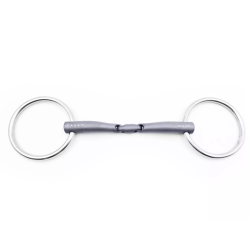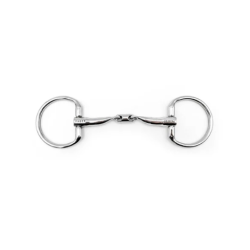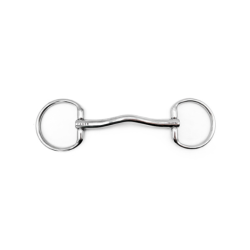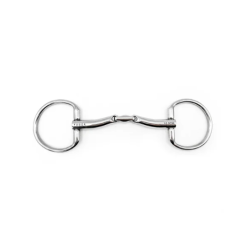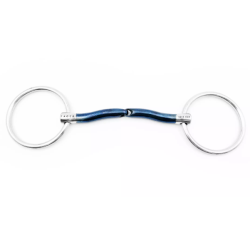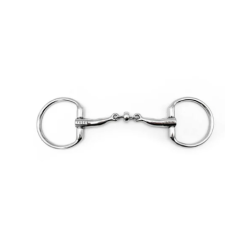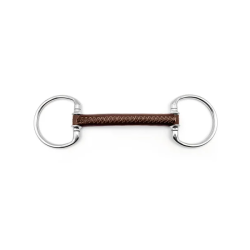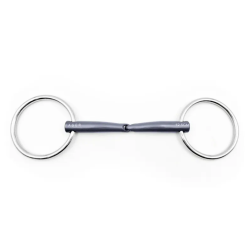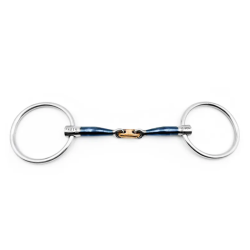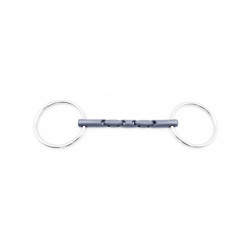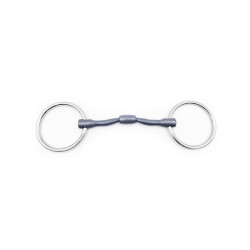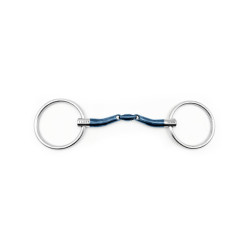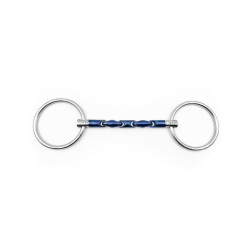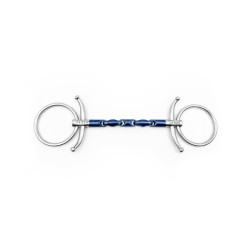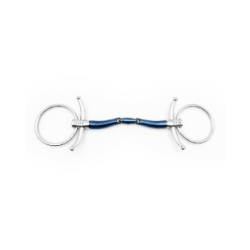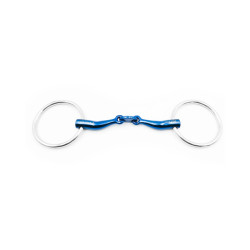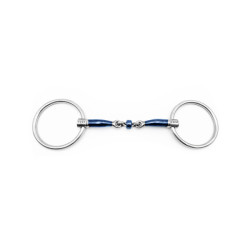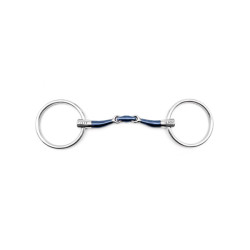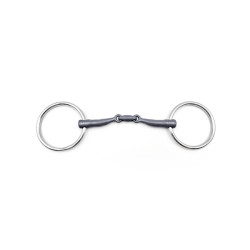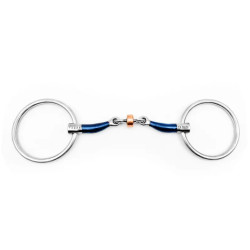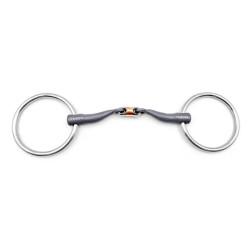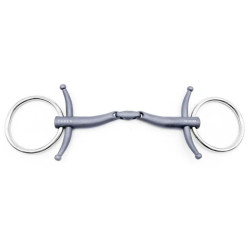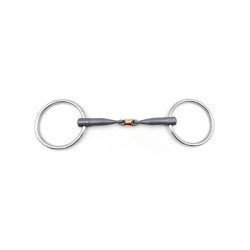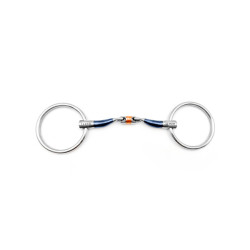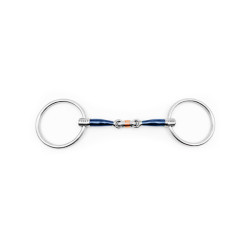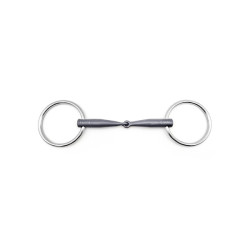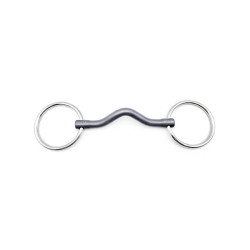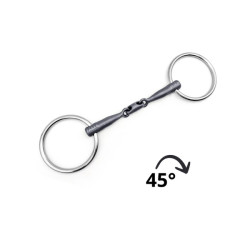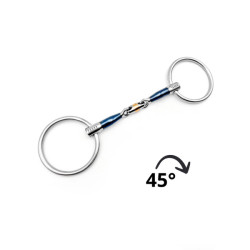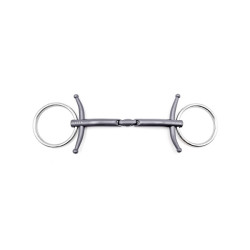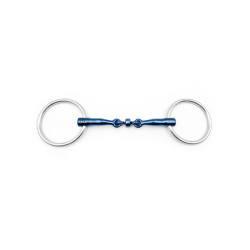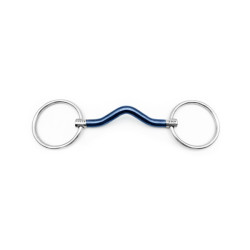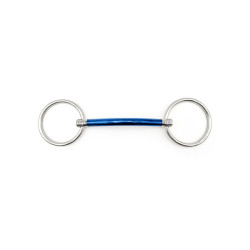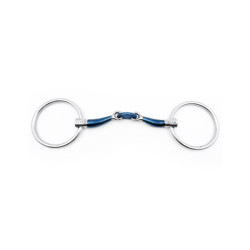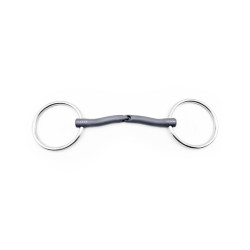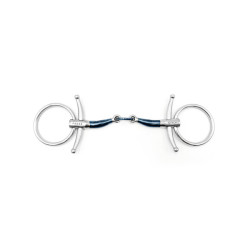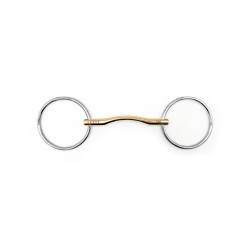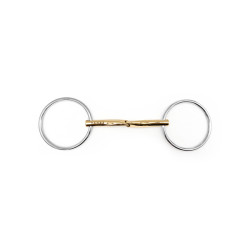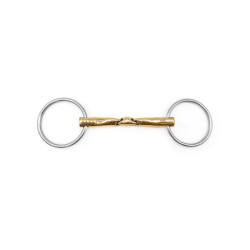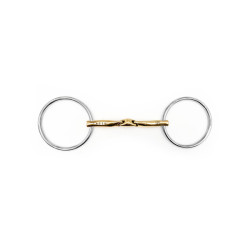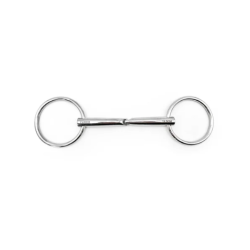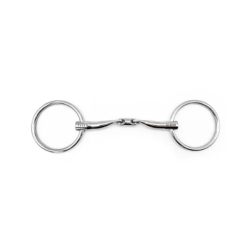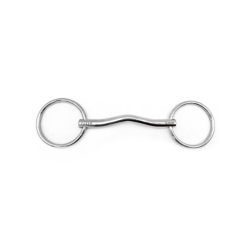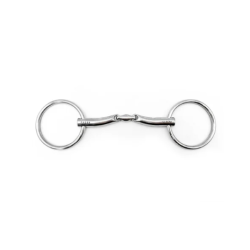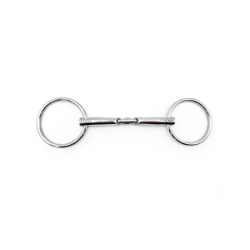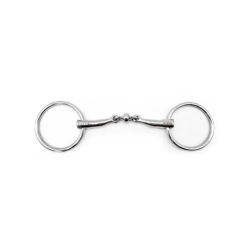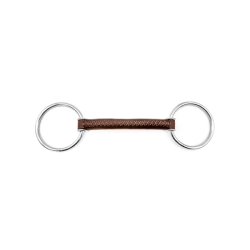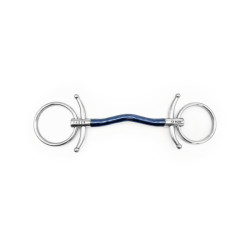Subcategories
-
Loose ring
Loose rings offer a soft contact to the mouth. They allow for a slight indirect contact compared to fixed rings, which makes it easier to play in the fingers and limits excessive tension.
-
Twin
Loose rings offer a soft contact to the mouth. They allow a slight indirect contact compared to the fixed rings, which makes it easier to play in the fingers and limits excessive tension. Here, the 4 rings, by the play of the rings avoid fixed points: divides the support. This net consists of two rings that can move freely between the two rings connected to the barrel. The two free rings are attached to the uprights, the barrel rings are attached to the reins. The contact becomes more direct on the mouth and allows to release the tension on the neck.
-
Full Cheek
The full cheek bit allows for a better channeling of the horse. The full cheeks placed on either side of the mouth act on the nose, allow better control of lateral flexion in a young horse and make this bit more directive.
-
Anti Rear
The anti-chatter bit, more commonly known as a "chifney", is a large ring surrounding the lower jaw and tongue. Its three rings are used to attach the uprights and the one below to attach a lanyard. It has a strong and direct action on the bars when the horse rears. To be used only on foot and not mounted.
-
Ashleigh
The Ashleigh bit is very similar to the Liverpool bit and is mainly used for driving. The legs of the Ashleigh bit are directed downwards to prevent the horse from grabbing them with its mouth. This bit is used much less frequently than the Liverpool. Unlike the Liverpool, it does not have a bit ring, so its leverage is also very high.
-
Droop Cheek
The Droop Cheek, with its upper limbs, has a slightly lowering effect on the neck. The upper limbs of the baucher provide a slight lateral frame which helps to improve the direction. It helps to achieve good tension in the back and better control.
-
Beval
The beval bits allow the reins to be hung on the top or bottom ring or with rings on the main ring and bottom ring. It can also be used as a lifter. It is used extensively for young riders as it offers good control and limited leverage on the horse's neck while allowing good lateral control.
-
Curb Gag
The curb gag bit acts mainly on the bars while releasing the pressure on the neck. A second pair of reins acts with a slight leverage effect on the bars. This bit allows you to abandon the chain bridle for more freedom of movement. The pressure on the bars can be increased as required. This bit is very suitable for strong, lively horses with a sensitive neck.
-
Half Full Cheek
The half needle snaffle provides control while preventing the upper needle from getting stuck in the noseband or injuring the horse. The action of the needle snaffle in the horse's mouth is similar to that of a 2 ring snaffle.
-
Dexter
The Dexter bit is a bit combined with a chifney. On horseback, the chifney is not used. It is used on foot to guarantee more control over the horse during handling. The chifney should be used with care to avoid injuring the horse.
-
Swales
The Swales bit is very similar to the Pelham bit. However, it reduces the pressure on the neck as the rings are not attached to the bit, so the horse is less enclosed. The snail bit is the only bit with a lever that does not act on the neck.
-
Espagnol
-
Bradoon
The snaffle bit, as its name indicates, is associated with a bridle bit. It is thin and allows the horse not to have too much material in the mouth, to be able to close the mouth easily for more stability.
-
Fulmer
The fulmer needles offer lateral framing while allowing discontinuous contact in the reins through the free ring. The free rings offer a soft contact without leverage and allow easy play in the fingers to relax the horse's forehand. This is a bit that is used with horses that tend to buck or get on the bit with conventional needle bits.
-
Kimblehook
The Goyo-Aga bit, mainly used in Iberian riding, has a fairly strong action. It is used with a curb chain and puts pressure on the bars with a leverage effect. It is recommended mainly for horses with a lot of natural impulsion. The Goyo Aga bit can be used in 3 ways.
-
Hackamore
A hackamore is a special mouthpiece that has no bit. The horse's mouth is completely free. It consists of a noseband and a curb chain which work by pressure points on the horse's head, on the muzzle and on the chin. A hackamore is used on opposite reins (support reins). It has a very powerful leverage effect depending on the size of its branches: its severity comes from the support on the fragile bones of the muzzle, and under the lower jaw, of a more or less "hard" curb chain (in leather, or in metal chain) which tightens this sensitive part of the horse's head. It is now seen on show jumping grounds, sometimes as a double of a simple bit in order to combine the two actions. In any case, it requires a light and experienced hand.
-
Icelandic
The side ring legs of the Icelandic bit are designed to avoid pinching the horse and improve the rider's aids. The curb chain can be detached from both sides, allowing the pressure to be distributed between the chin, jaw and mouth. This bit is reminiscent of the small Pelhams, but can be used with only one set of reins placed on the bottom ring.
-
Elevator
The butterfly bit is particularly suitable for show jumping. Due to its shape, it increases the rider's control over the horse, especially in tight curves. The many possible combinations, depending on the choice of rein placement, produce very different effects.
-
Liverpool
The Liverpool bit is commonly used for driving. It is a bit that offers several possibilities to buckle the guides. The Liverpool bit is available with two or three passes. A barrette can be fitted on request. The lower the reins are tied in the bit places, the stronger the leverage created and the more severe the bit is as a result.
-
Meroth
The Meroth bit can be used without a snaffle. It is a leather bit, held in the jaw by a leather curb chain. When properly cared for, the bit will adapt to the anatomy of your horse's mouth and provide a soft and respectful contact. There is no pressure on the neck and no rubbing of the snaffle (pressure, scratching, etc.).
-
Weymouth
The curb bit is characterised by a non-articulated barrel, and two long legs perpendicular to the barrel. The curb bit has a lowering effect. It is the length of the legs that determines the power of the leverage obtained by the use of the curb chain. Mainly used in dressage, it is combined with a snaffle bit.
-
Racing Bit
-
Presentation bit
-
Eggbutt
The eggbutt has oval-shaped rings. The olive bit has oval rings, which only rotate along one axis of rotation, thus avoiding any risk of pinching the corners of the mouth. It offers a more direct contact, better stability and a slight framing effect.
-
Butterfly
Butterfly rings are more commonly used in driving but can also be used in riding. It offers a leverage action on the neck as well as on the chin via the curb chain. It contributes to a better control for powerful and/or hot horses. The shape of the limbs improves the direction of the horse thanks to its framing effect. It should be used with one or two pairs of reins with or without rings in order to fine-tune the adjustments and to best adapt to the rider's hand and the horse's mouth.
-
Peewee
-
Pelham
The pelham bit is similar to the bridle bit, but in contrast it still has a large ring in the barrel, which allows a second pair of reins or a pair of rings to be attached. When used on the top ring, the pelham is slightly lifting. This bit is slightly more powerful than a single snaffle. When used on the lower ring, the pelham is lowering. In this application, the pelham is a powerful bit. Its leverage can vary depending on the size of its legs, the location of the reins and the setting of the curb chain. The curb chain allows you to vary the intensity of the bit. It is advisable to use bit guards for sensitive horses.
-
3 Rings
The Pessoa bit has a lowering effect. The Pessoa allows a stronger action on the neck by leverage by attaching the reins to the bottom ring. If the reins are attached to the middle ring, the action is similar to a single two-ring bit.
-
Gag
The special feature of the gag bit is the use of special uprights that pass through two rings perpendicular to the bit rings. This makes it possible to use it with two or four reins or with rings. The snaffle reins will then have a traditional lifting effect, and the reins attached to the special uprights will often have a lowering effect. It helps to improve the horse's balance by allowing the tip of the horse's nose to be brought closer to the rider.
-
Swivel
Swivel bit is a lowering bit. The rider can hang his reins fixed on the bottom ring, or in the traditional way on the main ring (for a softer action). The Swivel has a lighter action than the Pessoa bit, its leverage action being more distinct. In addition, its lifting action can be used on horses that lean more on their bit. It also offers a good frame due to the central attachment of the barrel to the rings.
-
Hackamore combi
The tandem bit is a mix between the use of a hackamore combined with a bit. Its action is present on the nose as well as on the mandible with the help of the curb chain. It is a bit that must be used with great precision and allows the horse to be channelled with great strength and energy.
-
Tango
The Tango bit is an innovation of the Beris brand and is a combination of a combination bit and a tandem bit. It is a bit for hot horses that do not accept a simple pressure in the mouth and prefer to distribute it evenly over the head. The first rein acts on the lower jaw and nose, the second acts as a curb chain.
-
D Ring
The Verdun bit has D-shaped rings, it has a slight leverage action. They only rotate along one axis of rotation, which prevents pinching of the corner of the mouth. The flat side of the D-ring makes this bit more directive than an olive or ring snaffle but less so than a needle bit. The passes fix the bit and allow a more direct action.
-
American
The American bit is derived from the western training bit and is adapted to sport and traditional riding in Europe. The reins can be attached "directly" to the lower rings or to a ring connecting the bit ring to the lower ring. The leverage on the neck is strong and varies with the size of the branches.

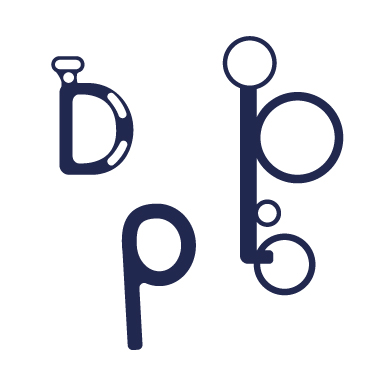
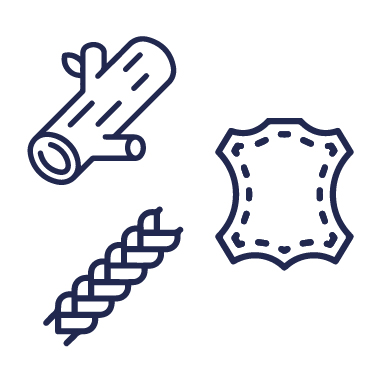
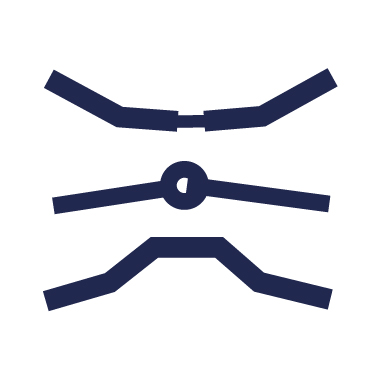
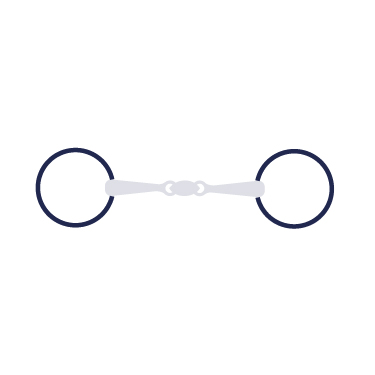
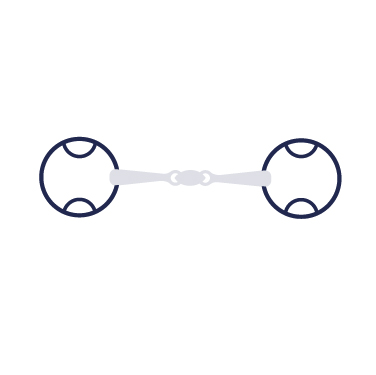
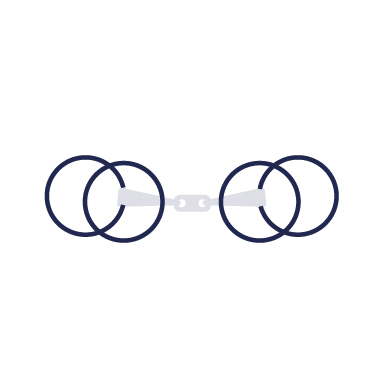
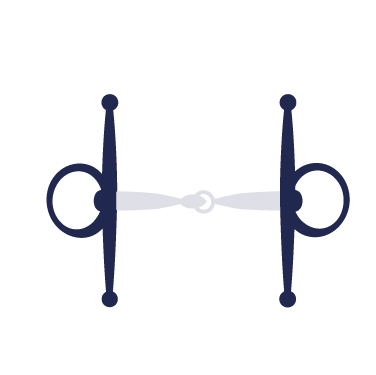

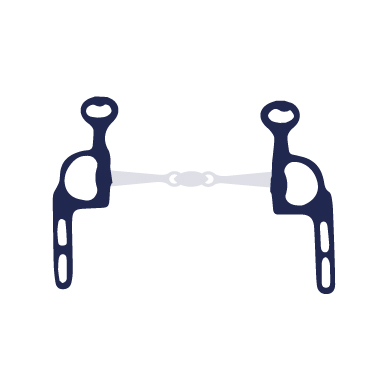
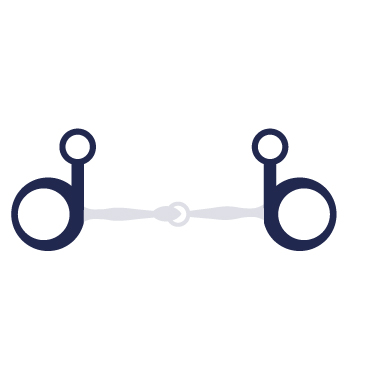
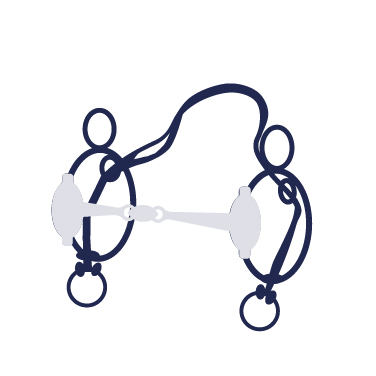
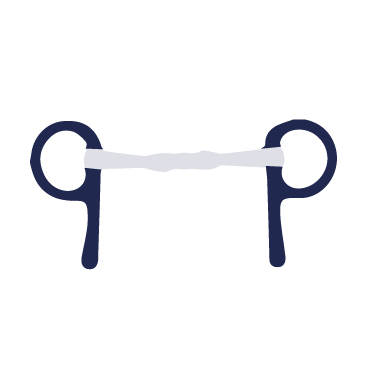
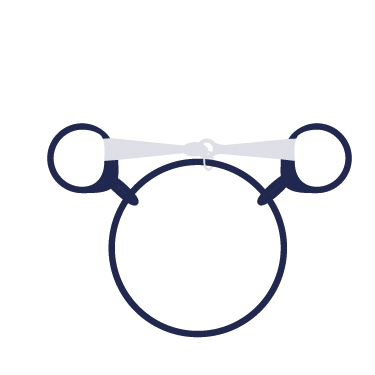
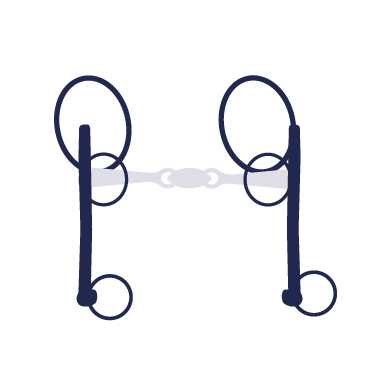
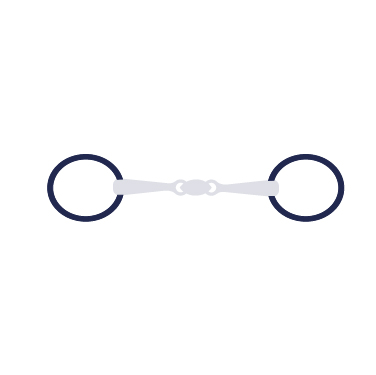
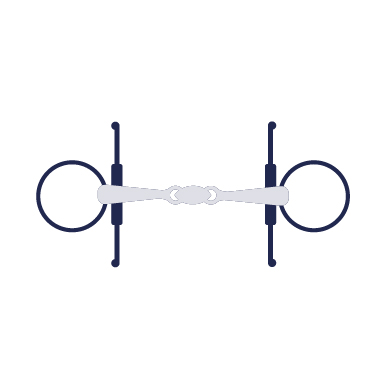
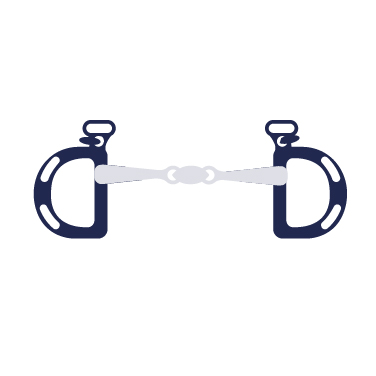
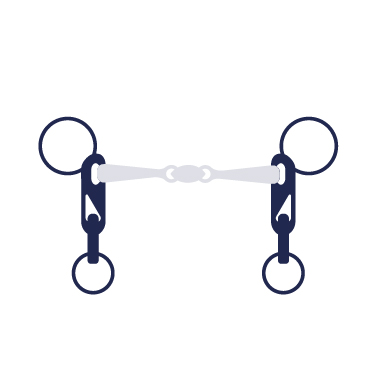
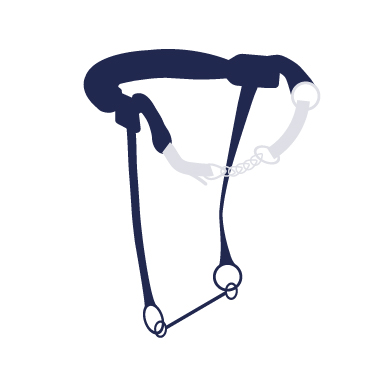
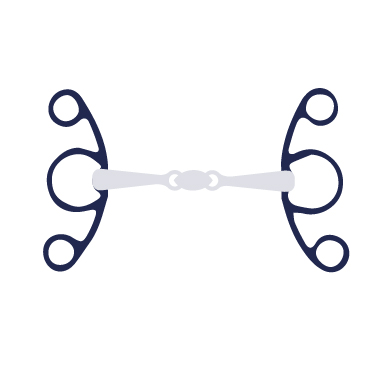
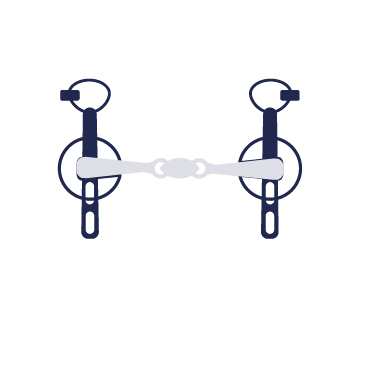
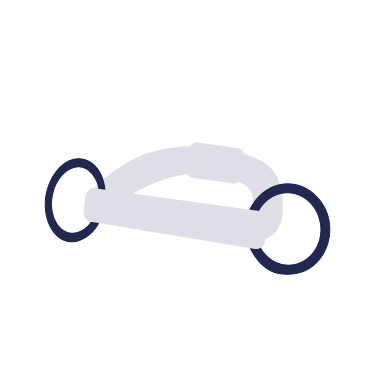
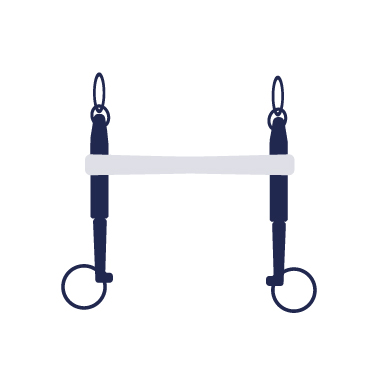
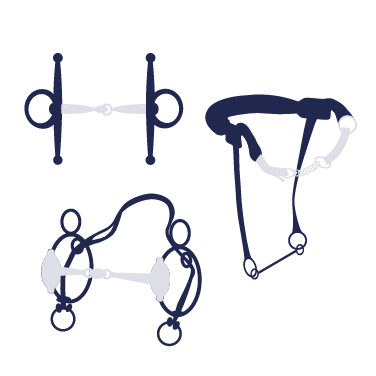

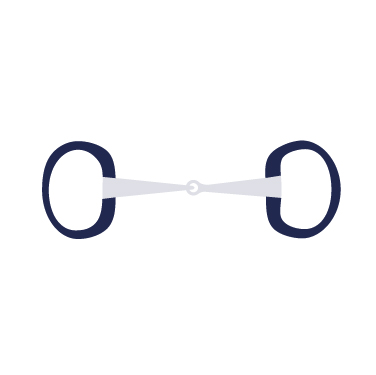
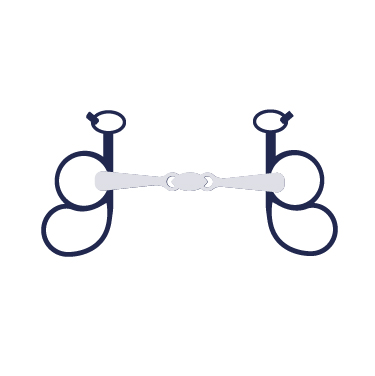

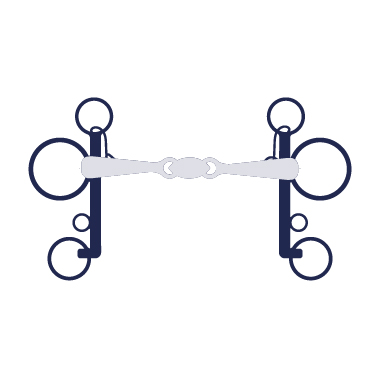
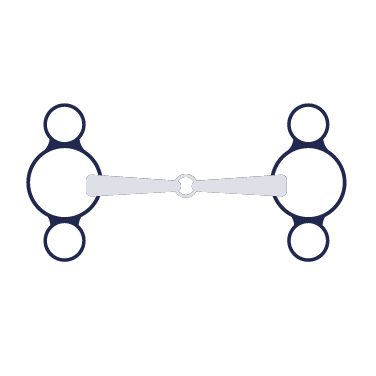
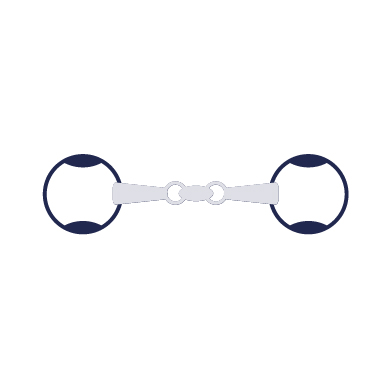
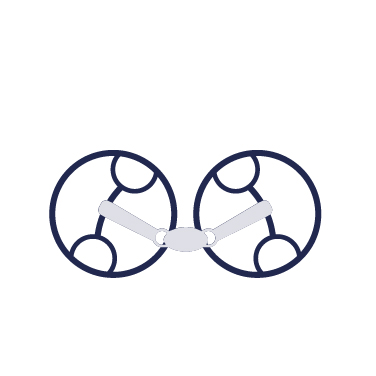

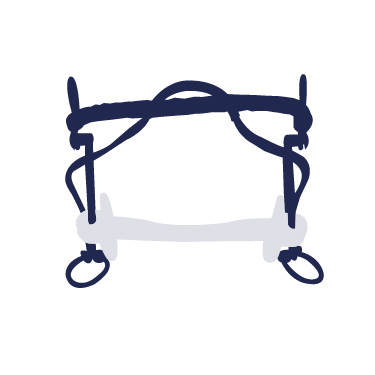
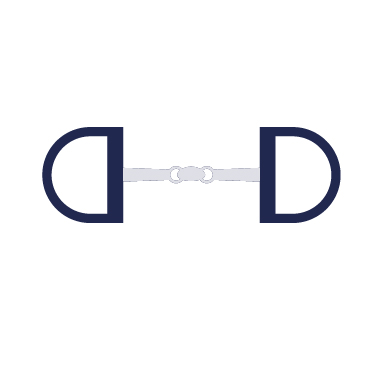

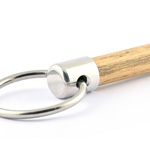
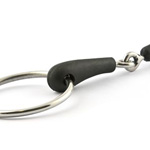
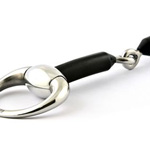
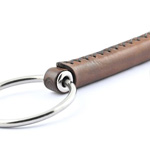
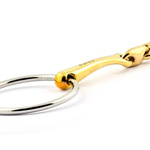
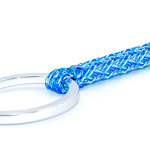
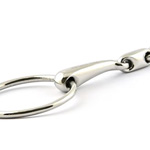
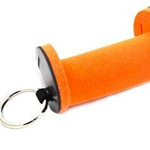
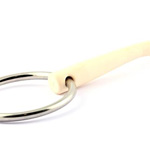
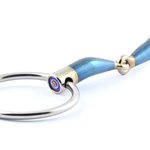
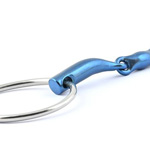
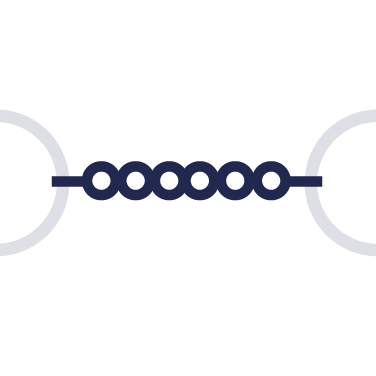
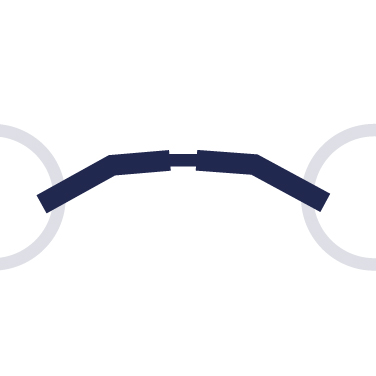
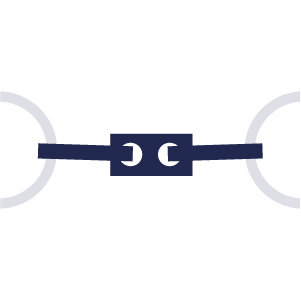
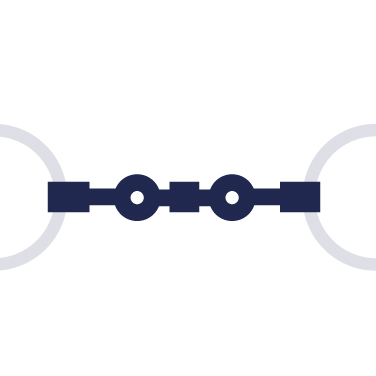


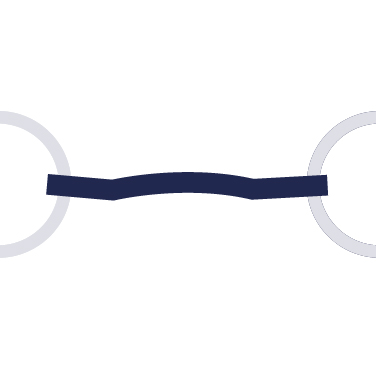

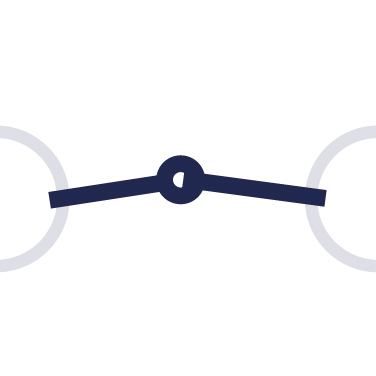




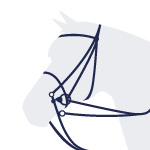




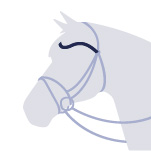
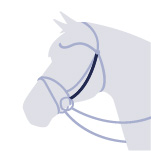
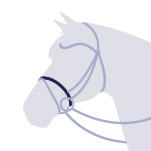
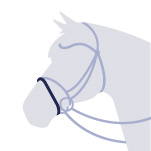
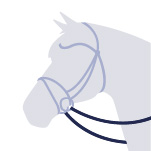
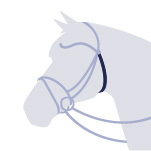
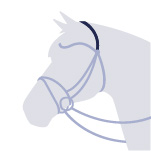

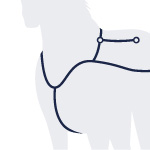


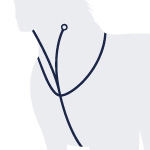



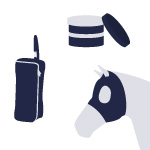

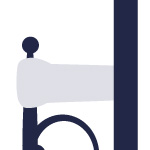

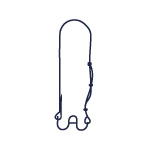


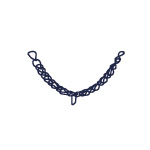
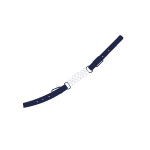
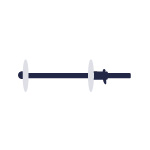
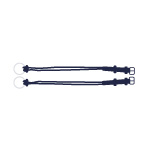

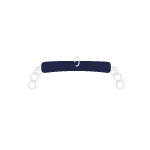
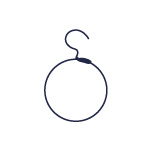








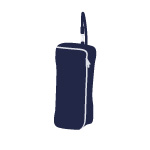




























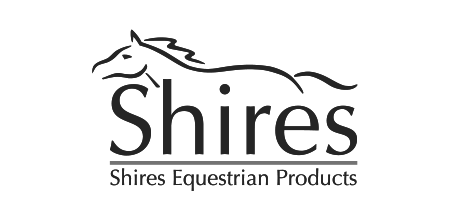









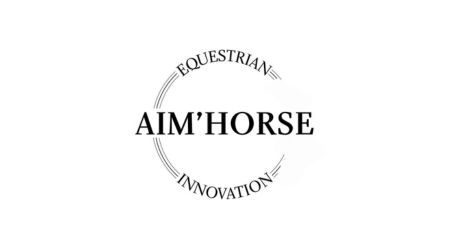






































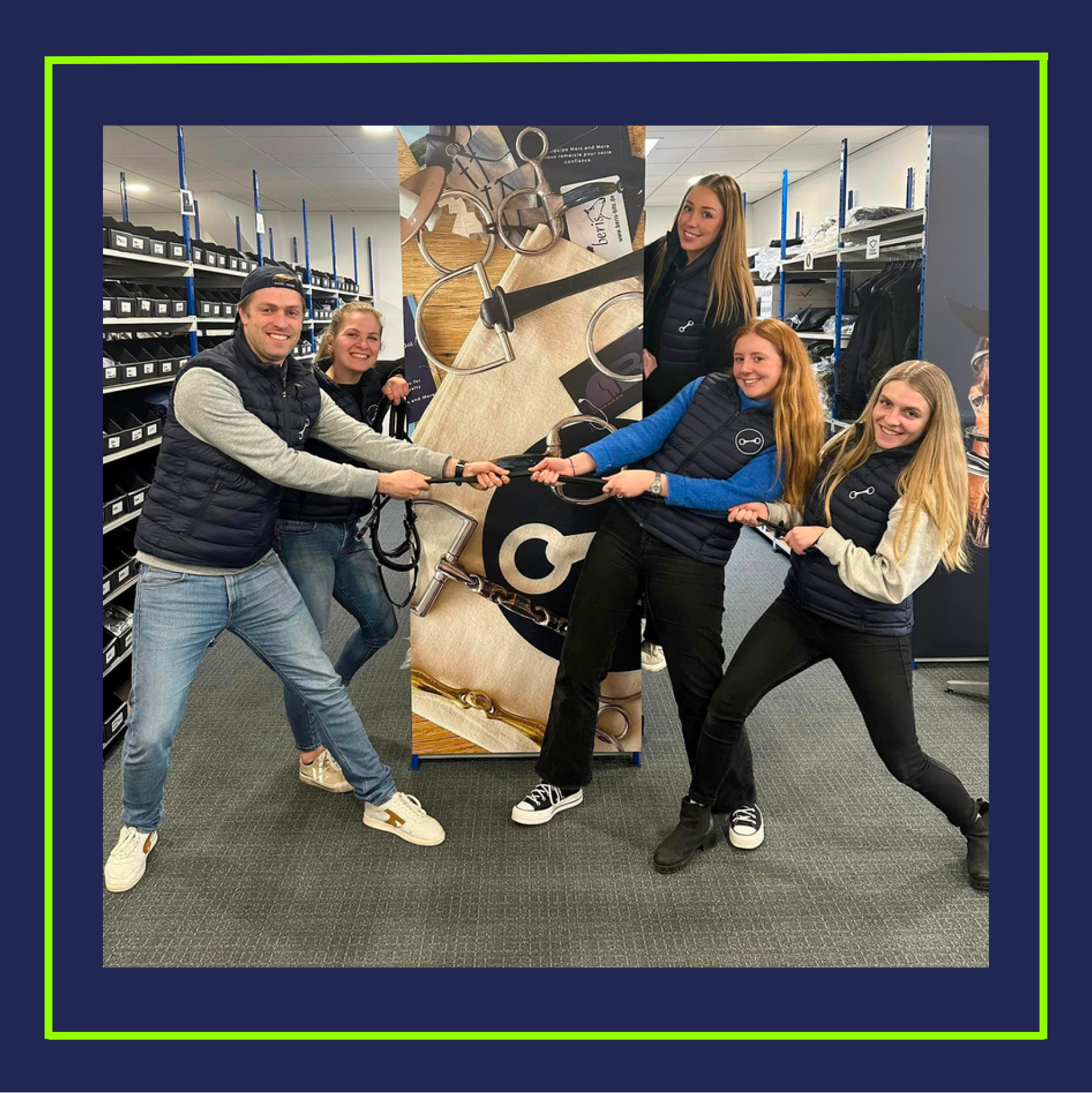
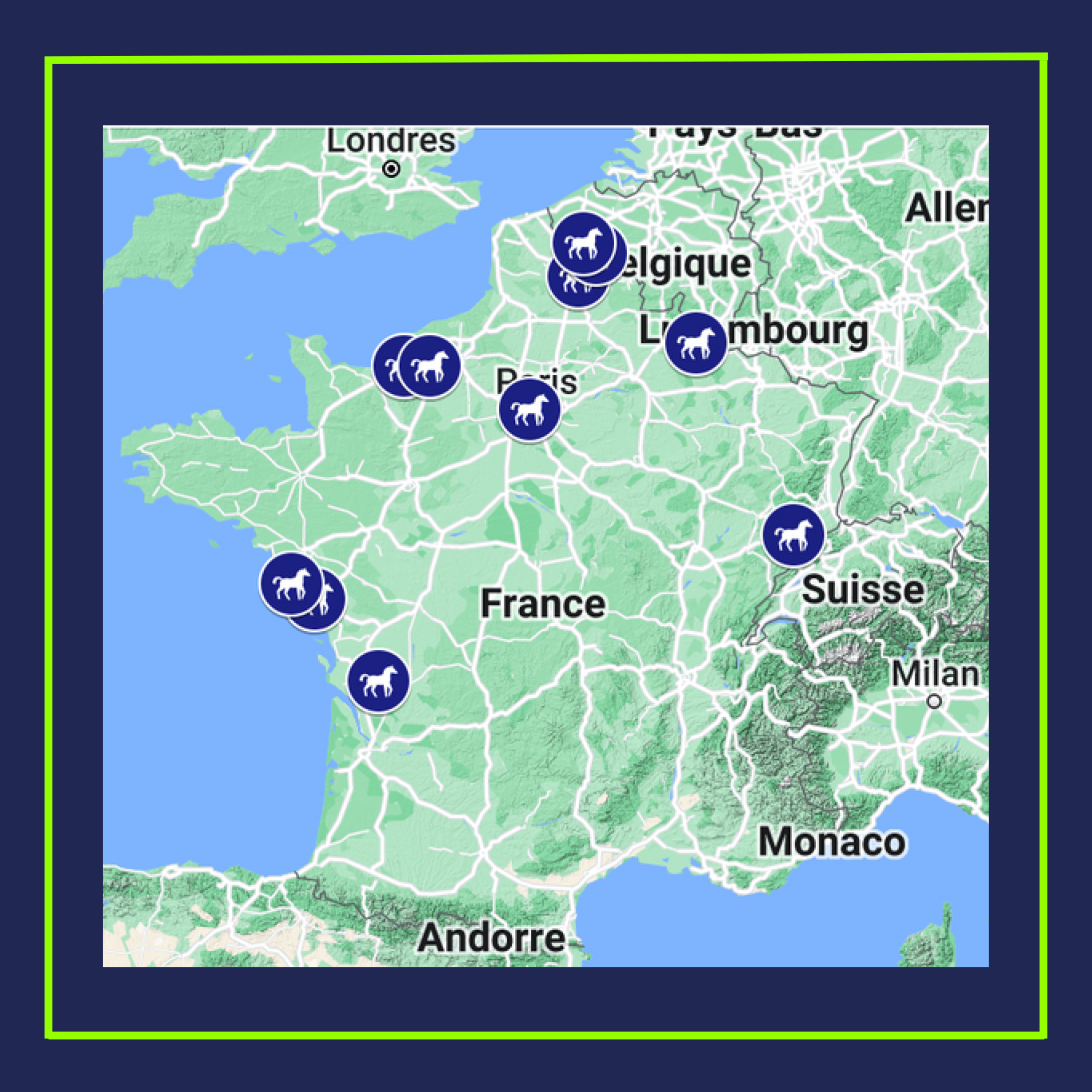
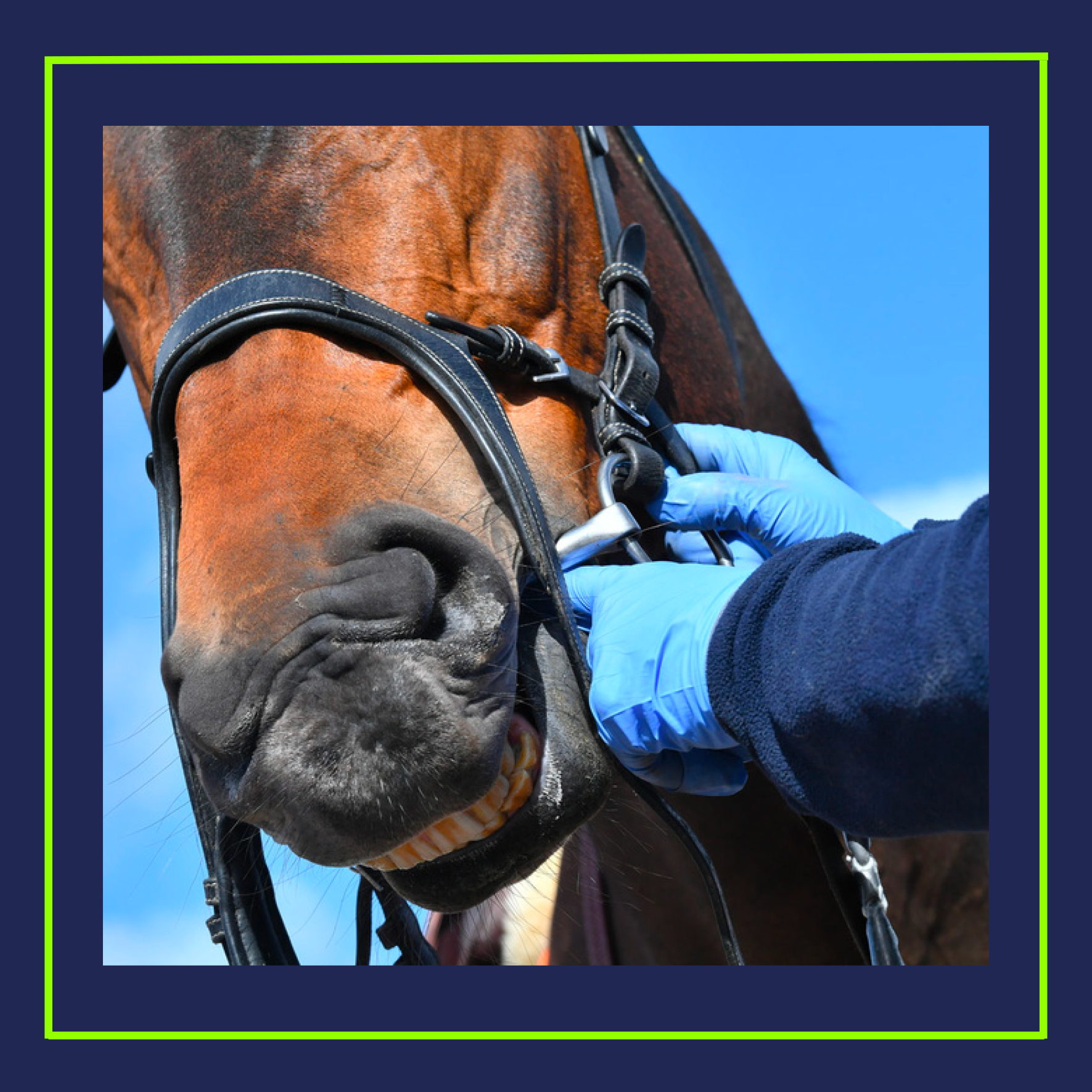
-2.jpg)
































